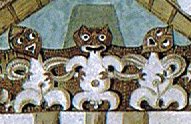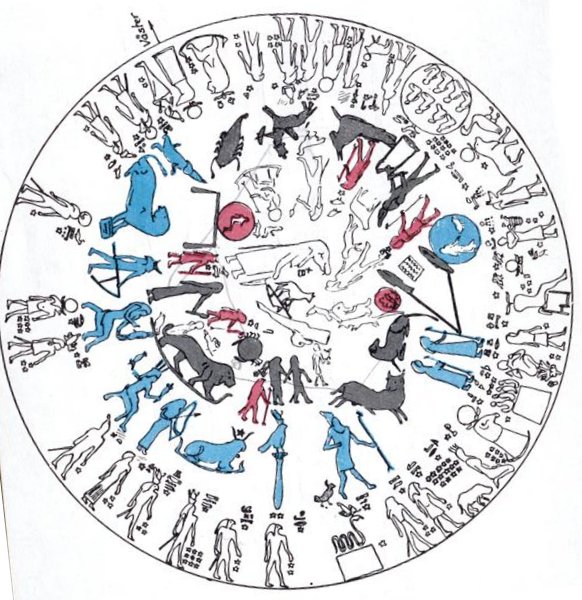Let us begin with an overview:
The high coastline in the northern corner of the island, to the left and right of Cabo Norte, corresponds to the time when light is at its maximum ('ebb'). The opposite side of the island is the shore line between Rano Kau and Rano Raraku which corresponds to the 'horizontal' back side of the light cycle. The island can be imagined as formed like a canoe under full sail, with the top of its mast (tu'u) in the north and with the sea below the canoe outside the coastline in the south. A canoe has a high prow (rei mua) and a high stern (rei muri), which we immediately can identify with the southwestern high ground around Rano Kau respectively with Poike ('the place aloft').
... The higher-ranked of the two largest political units on Rapa Nui was the Ko Tu'u Aro Ko Te Mata Nui. This literally translates as The Mast/Pillar/Post Before the Greater Tribes ... The triangular form of Easter Island is underlined by the locations of the 3 great craters. Waves lapping in the south are depicted between the heads of the 3 'swimmers' in the Taranaki storehouse:
The central Sun 'cat' is male and he is linked to his two Moon 'wives'. They correspond to Rano Kau and Rano Raraku, while the 'cat' himself has the position of 'mast'. Waxing Moon is at left and Waning at right we can read from the whites in their eyes. As to Aroi it is useful to begin its translation with aro:
Fornander's explanation of arrival from the west is not acceptable. Although Argo has only its stern visible in the west while its prow is 'drinking water' in the east I think this is a special case. ... Then the canoe was made to drink salt water; it was dipped forwards and backwards in the waves of the great moving altar of the gods and thus consecrated to Tane ... For some universal reason the prow should be in the west, and a possible explanation is that all the 'sky inhabitants' (excepting Moon) are moving from east to west (like the water currents from the American continent). Up must be in the east, because 'gravitation' evidently moves things from east to west. With time they will move down and to the west, down into the water. Moon is the primary time giver and she delivers, so to say, the events in their proper order. They are born down in the west, to be met with sooner or later in the general downward flow (increasing entropy) from high up in the east. This seems to be not only a reflection of the high mountains of the American continent but a universal picture, and the same view may have been shared by the creator of the Dendera round zodiac, where the zodiacal figures of the night are facing east and the rising Sun:
If we here read from left to right it means to join Moon, moving from the future towards the present. Life (light) is a force which can decrease entropy. |


